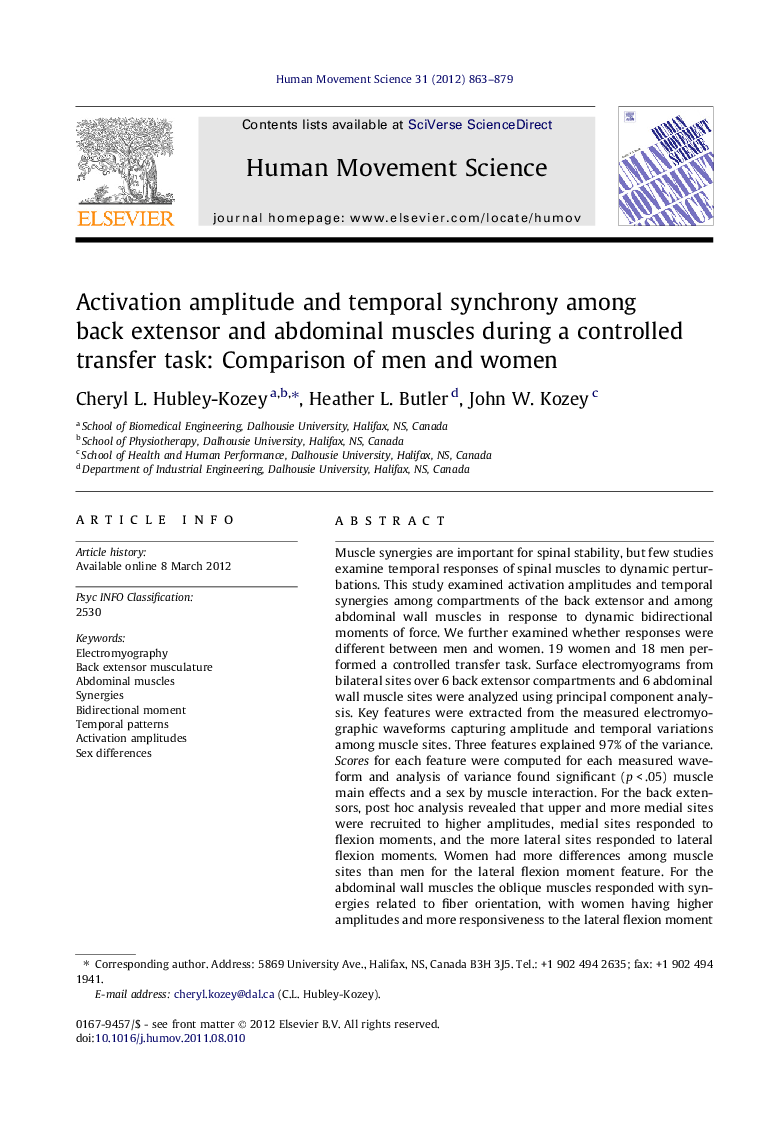| Article ID | Journal | Published Year | Pages | File Type |
|---|---|---|---|---|
| 928470 | Human Movement Science | 2012 | 17 Pages |
Muscle synergies are important for spinal stability, but few studies examine temporal responses of spinal muscles to dynamic perturbations. This study examined activation amplitudes and temporal synergies among compartments of the back extensor and among abdominal wall muscles in response to dynamic bidirectional moments of force. We further examined whether responses were different between men and women. 19 women and 18 men performed a controlled transfer task. Surface electromyograms from bilateral sites over 6 back extensor compartments and 6 abdominal wall muscle sites were analyzed using principal component analysis. Key features were extracted from the measured electromyographic waveforms capturing amplitude and temporal variations among muscle sites. Three features explained 97% of the variance. Scores for each feature were computed for each measured waveform and analysis of variance found significant (p < .05) muscle main effects and a sex by muscle interaction. For the back extensors, post hoc analysis revealed that upper and more medial sites were recruited to higher amplitudes, medial sites responded to flexion moments, and the more lateral sites responded to lateral flexion moments. Women had more differences among muscle sites than men for the lateral flexion moment feature. For the abdominal wall muscles the oblique muscles responded with synergies related to fiber orientation, with women having higher amplitudes and more responsiveness to the lateral flexion moment than men. Synergies between the abdominal and back extensor sites as the moment demands change are discussed. These findings illustrate differential activation among erector spinae compartments and abdominal wall muscle sites supporting a highly organized pattern of response to bidirectional external moments with asynchronies more apparent in women.
► We examined back extensor and abdominal muscle activation patterns during a controlled dynamic transfer task. ► Three features explained the majority of the variation in the amplitude and temporal patterns. ► We found differential amplitudes and temporal patterns among back extensor compartments and sites within abdominal muscles. ► No amplitude differences were found between men and women for back extensors but sex differences were found in women. ► Findings support a highly organized pattern of response among back extensor and abdominal sites to dynamic moments.
